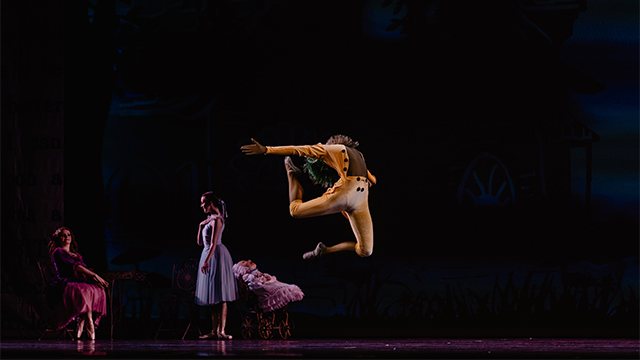Playwriting: Liz Lerman’s Critical Response Process for Workshopping New Plays
Written by Ashleigh Gardner
October 26, 2017
Every new playwright needs a garden in which they can cultivate their growing script. In our continuing series for beginning playwrights, we discuss the advantages of Liz Lerman’s Critical Response process that’s perfect for every growing playwright. Obviously, you’ve got questions, right? We’ve all got questions. Let’s start from the beginning.
Who’s Liz Lerman?

Liz Lerman is a MacArthur Award-winning choreographer based out of New York City. In the 1990s, she became frustrated with her experiences of being on the receiving end — and the giving end — of artistic criticism. In 2003, Lerman and her colleague John Borstel collaborated to write Liz Lerman’s Critical Response Process: A method for getting useful feedback on anything you make, from dance to dessert. (Available here.) Thus was born the Critical Response Process, a way to help artists feel more in control of the growth of their work. (For the purposes of this article, I’ll be referring to the “artist” as “the playwright” when talking about how to hold a CRP session.)
What’s this “Critical Response Process” thing?

The CRP can be used by any artist for any sort of art. It’s a four-step system that focuses on inquiry and dialogue about a piece of art in its early stages. This aims to help artists maintain some control over the degree of criticism given to their work (while also learning how they can improve the work through multiple offered perspectives). Ever watch Project Runway or Top Chef or Face Off? This process is a lot like the judging process in those shows, except the artist is in charge and everything is much more friendly. (Picture the playwright behind the table asking the questions instead of the judges.)
Who’s involved?

Three to four parties are involved in the CRP: the playwright, the performers, the audience, and the facilitator(s) (who ask the questions and orchestrate each step of the CRP). (If you’re performing the piece yourself, you can take the performers out of the equation.)
What are the steps to the CRP?

The CRP has four steps, and you can arrange them in any order you like. (You can also choose to omit any of the steps.) Additionally, here’s where the facilitators come in — they can ask the questions for you (while you sit onstage, backstage, or in the audience) or they can regroup the audience if the audience gets loud, carried away with opinions, etc. They’re basically there to act as moderators and keep the CRP session on track so it doesn’t spiral out of control.
Step 1: Statement of meaning by the group: Audience members take a few minutes to tell the playwright what they found meaningful, interesting, evocative, startling, or exciting about the play or things that really hooked them on the story. Statements of meaning are positive and specific. This includes statements like, “I thought the pacing of the piece was just right, “ or, “I loved the way you introduced your characters.” This step reinforces the idea that what a playwright does well is what they build on.
Step 2: Questions from the playwright: The writer asks questions they have either prepared before the reading, during the reading, or during Step 1 (or during all three). This begins a dialogue between the playwright and the audience that supports the playwright in solving problems that the audience and/or the playwright see with the play. This includes questions like, “Did you actually believe he would shoot her in scene 2?” or, “Were there enough moments of levity in such a dramatic piece?” Questions can be answered with “yes” or “no”, or the playwright can choose to engage the audience in a conversation.
Step 3: Neutral questions from the audience: The audience asks questions of the playwright in the form of an neutral question. And by “neutral question”, Lerman and Borstel mean this: if you bake a cake and give a piece to your friend and they ask, “Why is this cake so dry?” it implies that they don’t enjoy the cake, that its dryness is bad. (Their question is opinionated.) However, if your friend asks, “What kind of texture were you going for?” it implies that they’re interested in the process behind the cake’s creation, not judgmental of it. This includes questions like, “What was your intention by including the mother’s ghost in scene four?” or, “What inspired the use of a foreign language in the play?”
Step 4: Offered opinions from the audience: The audience gets to raise their hand and say, “I have an opinion about this. Would you like to hear it?” — and the playwright can say “yes” or “no”. That’s it. The audience must abide by the will of the playwright. (And if you’ve heard enough or there’s a particular audience member who has been insistent on arguing with you the whole night, you can SHUT. IT. DOWN.)
Alright, I’m intrigued. How do I do one of these?

First, if you’re in high school or college and you want to stage a CRP session, ask your drama teacher or professor if you can hold one after classes or during the evening and invite other students (and/or parents) to participate as audience members. See if the auditorium or a classroom is free. If you’re out of college, look into renting a theatre space or renting a coffee shop out for a night. Or, if you’re looking for a less expensive and smaller option, you can host one at your home.
What kind of materials do I need?

It helps to give the audience a sheet of paper with the basic guidelines for your session (the play title, what the play is about, steps 1-4 and what they mean, rules for the CRP, etc.), a pen, and a couple of sheets of paper. This allows them to become familiar with the structure of the session, take notes, and then hand those notes back to you so you can study them and use them in your revision process.
Why should I do this as a playwright?

As playwrights, we’re offered criticism that seems to enter the conversation at the most inopportune or inappropriate time. Somebody says, “I really didn’t like the way this happened,” or, “You should definitely include this one thing in your next draft,” (even if you don’t plan on revising for a fifth or sixth draft anyway). People like their opinions, so they give them often. The CRP allows you, as a playwright, to hear criticisms and opinions on your own terms in a structured way that gives you the chance to ask questions, take notes, and collect notes from the people who attended your reading — without feeling as though someone just ripped apart your full-length play like a werewolf tears apart an unsuspecting victim.
Interested in playwriting? Check out our other features below!
- Playwright Interview: Jonathan Dorf
- Playwright Interview: Ricardo-Soltero Brown
- Playwright Interview: Crystal Skillman
- Playwright Interview: David-Matthew Barnes
- Playwright Interview: Rosary O’Neill
- Playwright Interview: David Valdes Greenwood
- Playwright Interview: Angela Cerrito
- Playwright Interview: Lisa Bruna
- Playwright Interview: Samantha Charlip
- 7 Tips for Beginning Playwrights
- Aristotle’s Three Unities — and Why You Should Use Them in Your Script
- Judges’ Tactics: How Playwriting Judges Score Superior Scripts
- 25 Plays All High School Seniors Should Read (Before They Graduate)
- 30 MORE Plays All High School Seniors Should Read (Before They Graduate)
- 11 Tony Award-Winning Plays (from the Last Eleven Years) You Should Know
